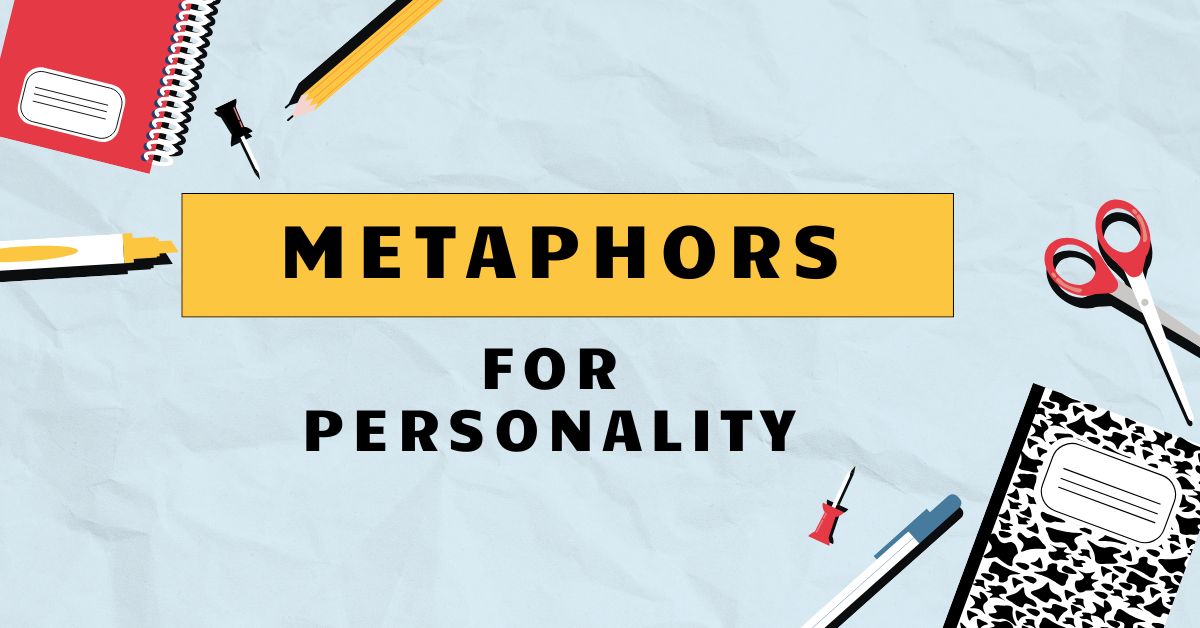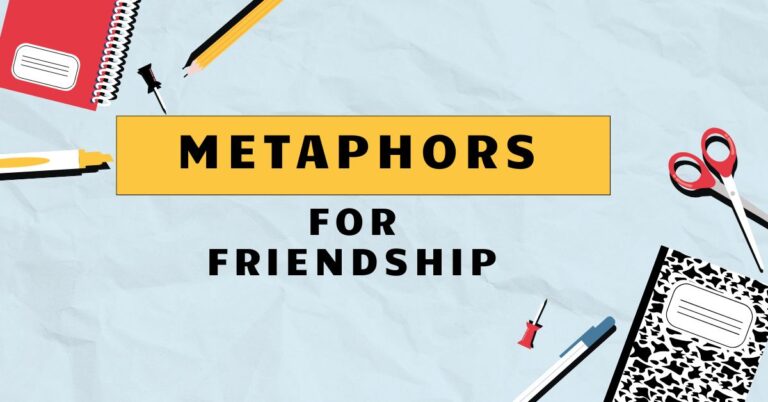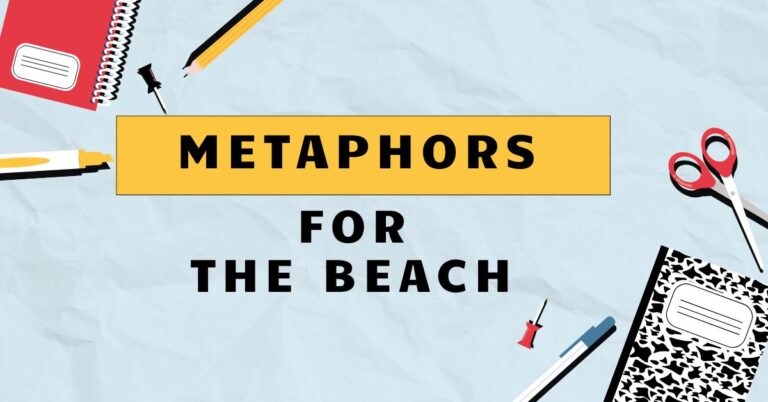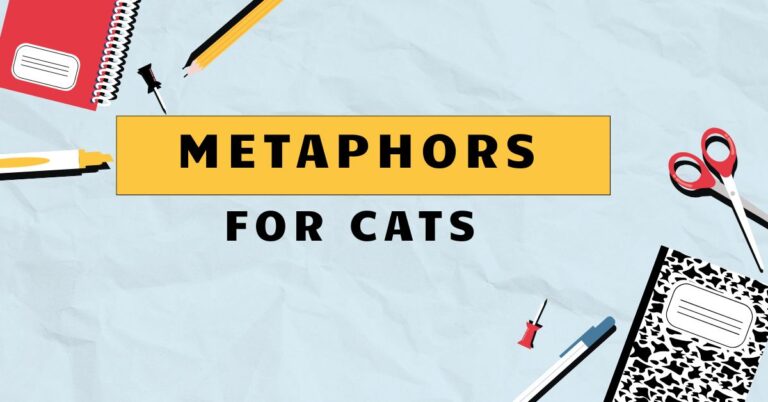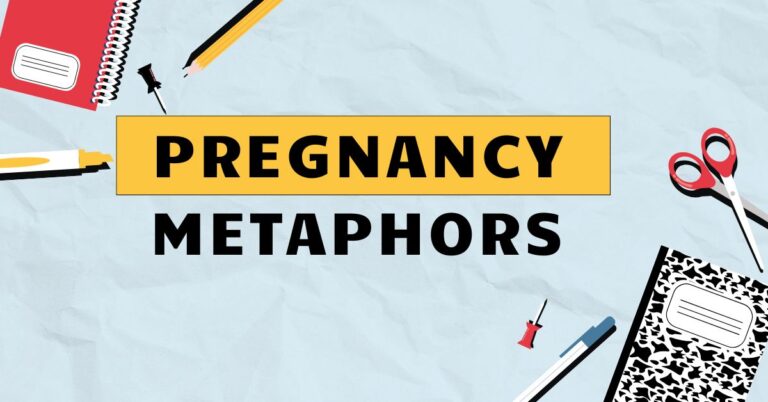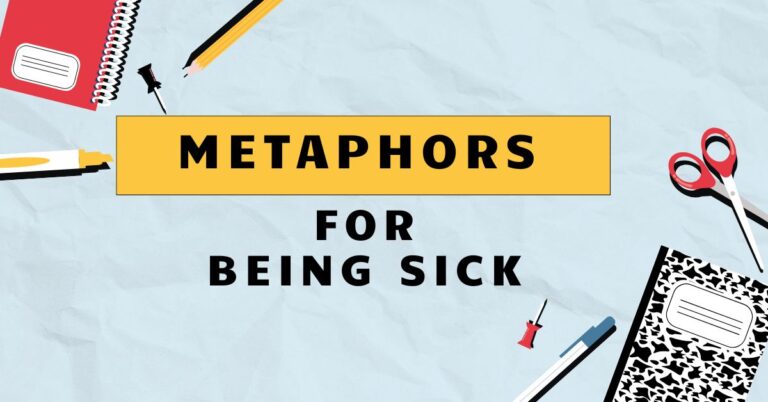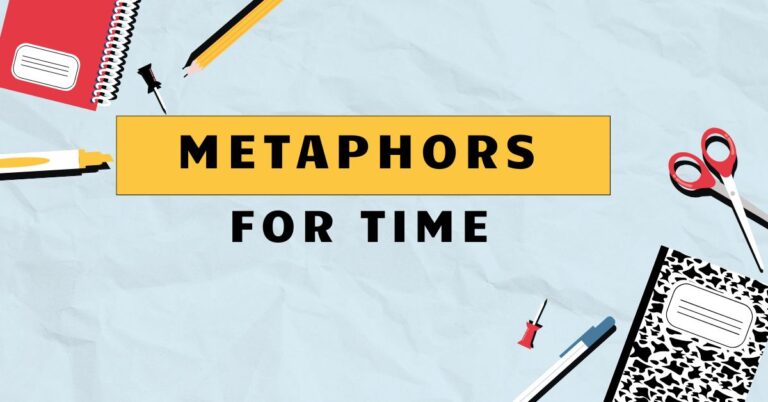49 Metaphors For Personality: Describing Character with Figurative Language
Understanding how to use metaphors to describe personality is a valuable skill in English. It allows for more vivid and engaging communication, moving beyond simple adjectives to paint a richer picture of someone’s character.
This skill is particularly useful in creative writing, journalism, and everyday conversation when you want to express nuances and subtleties. This article will benefit students learning English, writers seeking to enhance their descriptive abilities, and anyone interested in the art of figurative language.
By exploring different types of metaphors and their applications, you can learn to craft compelling descriptions that resonate with your audience and bring your subjects to life. Mastering this technique will significantly improve your ability to express complex ideas and emotions effectively, adding depth and color to your language.
Table of Contents
- Definition of Metaphors for Personality
- Structural Breakdown of Personality Metaphors
- Types and Categories of Personality Metaphors
- Examples of Metaphors for Personality
- Usage Rules for Personality Metaphors
- Common Mistakes with Personality Metaphors
- Practice Exercises
- Advanced Topics in Personality Metaphors
- Frequently Asked Questions
- Conclusion
Definition of Metaphors for Personality
A metaphor for personality is a figure of speech that describes someone’s character or traits by comparing them to something else, without using “like” or “as.” It’s an implicit comparison that highlights similarities between the person and the object, animal, or concept being used metaphorically. The aim is to create a more vivid and insightful understanding of the individual’s personality.
Metaphors in this context function as a powerful tool for communication, allowing us to convey complex aspects of personality in a concise and memorable way. They go beyond literal descriptions, tapping into the reader’s or listener’s imagination to evoke a deeper understanding.
For example, saying someone is “a rock” implies they are stable, dependable, and strong, without explicitly stating those qualities.
Personality metaphors can be classified based on the source domain they draw from. This includes animals (e.g., “a fox”), nature (e.g., “a sunflower”), objects (e.g., “a compass”), colors (e.g., “a grey cloud”), and weather (e.g., “a hurricane”).
Each category brings its own set of connotations and associations, allowing for a wide range of expressive possibilities. The effectiveness of a personality metaphor depends on the context and the shared understanding between the speaker and the audience.
Structural Breakdown of Personality Metaphors
The basic structure of a personality metaphor involves two key elements: thetenorand thevehicle. Thetenoris the subject being described – in this case, the person whose personality we are trying to convey.
Thevehicleis the object, animal, or concept that is used to represent the person’s characteristics.
The relationship between the tenor and the vehicle is crucial. The effectiveness of the metaphor relies on the shared qualities or associations between the two.
For instance, if we say “He is a lion,” the tenor is the person, and the vehicle is “lion.” The metaphor works because lions are commonly associated with courage, strength, and leadership.
Often, metaphors for personality are embedded within larger sentences or phrases, providing context and enhancing their impact. The surrounding words can reinforce or modify the meaning of the metaphor, adding layers of complexity.
For example, “Despite his gentle appearance, he’s a wolf in sheep’s clothing” uses the extended metaphor of “wolf in sheep’s clothing” to suggest hidden danger or deception.
The implied ground is another important structural aspect. This refers to the shared characteristics or qualities between the tenor and the vehicle that make the metaphor meaningful.
Identifying the implied ground helps to understand why a particular metaphor is used and what aspects of the person’s personality are being highlighted.
Types and Categories of Personality Metaphors
Personality metaphors can be broadly categorized based on the source domain from which the vehicle is drawn. Each category offers a unique set of connotations and associations, allowing for a wide range of expressive possibilities.
Animal Metaphors
Animal metaphors are some of the most common and evocative ways to describe personality. Different animals are associated with specific traits, making them ideal for conveying particular aspects of someone’s character.
For example, a person described as “a fox” is likely seen as cunning and clever, while someone described as “a bear” might be perceived as strong and protective.
The effectiveness of an animal metaphor depends on the cultural understanding and associations with that animal. In some cultures, certain animals may have different connotations, so it’s important to be aware of these nuances when using animal metaphors.
Nature Metaphors
Nature metaphors draw on elements of the natural world to describe personality. These can include plants, landscapes, weather phenomena, and natural forces.
Nature metaphors often evoke a sense of beauty, resilience, or unpredictability, depending on the specific element being used.
For example, describing someone as “a sunflower” suggests they are bright, cheerful, and optimistic, always turning towards the light. Conversely, describing someone as “a dormant volcano” implies they have a hidden intensity or anger that could erupt at any moment.
Object Metaphors
Object metaphors use inanimate objects to represent personality traits. These can range from everyday items to complex machines, each with its own set of associations.
Object metaphors often highlight qualities such as reliability, precision, or fragility.
Saying someone is “a well-oiled machine” suggests they are efficient, organized, and productive. Describing someone as “a ticking time bomb” implies they are under pressure and likely to explode with anger or frustration.
The choice of object can reveal a great deal about the speaker’s perception of the person being described.
Color Metaphors
Color metaphors use colors to represent personality traits or emotional states. Different colors are associated with specific feelings and characteristics, making them a powerful tool for conveying subtle nuances.
Color metaphors can add depth and emotional resonance to personality descriptions.
Describing someone as “a ray of sunshine” uses the color yellow (associated with sunshine) to suggest they are cheerful, optimistic, and bring joy to others. Saying someone is “feeling blue” uses the color blue to represent sadness or melancholy.
The cultural associations with different colors can also influence the meaning of color metaphors.
Weather Metaphors
Weather metaphors use different weather conditions to describe personality traits or emotional states. Weather can be unpredictable, powerful, and transformative, making it a rich source of metaphorical imagery.
Weather metaphors often convey a sense of moodiness, intensity, or changeability.
Describing someone as “a ray of sunshine” (also a color metaphor) uses weather to suggest they are cheerful and optimistic. Saying someone is “a stormy sea” implies they are turbulent, emotional, and prone to outbursts.
The specific weather condition chosen can reveal a great deal about the speaker’s perception of the person’s emotional state.
Examples of Metaphors for Personality
Here are some examples of metaphors used to describe personality, categorized by type:
Animal Metaphors Examples
The following table provides various examples of animal metaphors used to describe personality traits. Each example will illustrate how animals can be used to represent distinct character attributes, enriching descriptions with vivid imagery and commonly understood associations.
| Metaphor | Personality Trait Implied |
|---|---|
| He’s a lion. | Courageous, strong, leader |
| She’s a fox. | Cunning, clever, sly |
| He’s a bear. | Grizzly, protective, strong |
| She’s a dove. | Peaceful, gentle, innocent |
| He’s a snake. | Deceitful, treacherous, untrustworthy |
| She’s an owl. | Wise, observant, knowledgeable |
| He’s a peacock. | Vain, proud, showy |
| She’s a bee. | Busy, industrious, productive |
| He’s a sheep. | Follower, meek, easily led |
| She’s a wolf. | Independent, fierce, predatory |
| He’s a turtle. | Slow, cautious, patient |
| She’s a hummingbird. | Energetic, vibrant, restless |
| He’s a hawk. | Sharp-eyed, perceptive, watchful |
| She’s a parrot. | Imitative, talkative, repetitive |
| He’s a mule. | Stubborn, obstinate, inflexible |
| She’s a butterfly. | Flighty, carefree, social |
| He’s a kangaroo. | Energetic, jumpy, protective |
| She’s a spider. | Crafty, manipulative, patient |
| He’s a pig. | Greedy, messy, selfish |
| She’s a lamb. | Innocent, gentle, vulnerable |
| He’s a rat. | Sneaky, untrustworthy, cowardly |
| She’s a swan. | Graceful, elegant, beautiful |
| He’s a stallion. | Strong, virile, energetic |
| She’s a vixen. | Sly, attractive, cunning |
| He’s a donkey. | Stubborn, hardworking, foolish |
| She’s a tigress. | Fierce, protective, independent |
| He’s a chameleon. | Adaptable, changeable, versatile |
| She’s a cricket. | Cheerful, chirpy, talkative |
Nature Metaphors Examples
The following table showcases nature metaphors for personality traits. By employing elements of nature, we can create vivid and relatable comparisons that capture the essence of an individual’s character.
These metaphors tap into our inherent understanding of the natural world to convey personality attributes in a compelling manner.
| Metaphor | Personality Trait Implied |
|---|---|
| He’s a mountain. | Stable, strong, immovable |
| She’s a sunflower. | Optimistic, cheerful, bright |
| He’s a gentle breeze. | Calming, soothing, refreshing |
| She’s a raging river. | Passionate, unstoppable, intense |
| He’s a deep forest. | Mysterious, complex, introspective |
| She’s a blooming rose. | Beautiful, delicate, blossoming |
| He’s a sturdy oak. | Resilient, reliable, enduring |
| She’s a willow tree. | Flexible, graceful, adaptable |
| He’s a desert. | Arid, lonely, barren |
| She’s a lush meadow. | Abundant, nurturing, inviting |
| He’s a volcano. | Explosive, intense, passionate |
| She’s a calm lake. | Peaceful, serene, tranquil |
| He’s a bright star. | Inspiring, guiding, brilliant |
| She’s a dark cloud. | Gloomy, depressing, ominous |
| He’s a rocky path. | Difficult, challenging, uneven |
| She’s a fertile garden. | Creative, productive, nurturing |
| He’s a vast ocean. | Deep, mysterious, boundless |
| She’s a rolling hill. | Gentle, approachable, easygoing |
| He’s a thorny bush. | Defensive, prickly, unapproachable |
| She’s a winding river. | Complex, unpredictable, meandering |
| He’s a tall redwood. | Dignified, strong, enduring |
| She’s a fragile flower. | Delicate, vulnerable, beautiful |
| He’s a dense jungle. | Overwhelming, chaotic, wild |
| She’s a clear stream. | Pure, transparent, refreshing |
| He’s a barren wasteland. | Desolate, empty, unproductive |
| She’s a hidden spring. | Secretive, refreshing, unexpected |
| He’s a towering cliff. | Imposing, intimidating, unyielding |
Object Metaphors Examples
The following table lists object metaphors for personality. These metaphors use inanimate objects to represent personality traits, providing a tangible and relatable comparison.
Each object carries specific connotations that enhance our understanding of the individual’s character.
| Metaphor | Personality Trait Implied |
|---|---|
| He’s a rock. | Stable, dependable, unwavering |
| She’s a compass. | Guiding, directional, reliable |
| He’s a ticking time bomb. | Unstable, explosive, stressed |
| She’s a well-oiled machine. | Efficient, organized, productive |
| He’s a broken record. | Repetitive, annoying, persistent |
| She’s a blank canvas. | Open, receptive, adaptable |
| He’s a rusty nail. | Irritating, bothersome, persistent |
| She’s a shining star. | Brilliant, successful, admired |
| He’s a loose cannon. | Unpredictable, reckless, dangerous |
| She’s a safety net. | Supportive, protective, reliable |
| He’s a brick wall. | Unresponsive, stubborn, unyielding |
| She’s a velvet glove. | Gentle, persuasive, deceptive |
| He’s a sharp knife. | Intelligent, incisive, dangerous |
| She’s a warm blanket. | Comforting, reassuring, nurturing |
| He’s a tangled web. | Complicated, confusing, deceptive |
| She’s a sturdy bridge. | Connecting, supportive, reliable |
| He’s a hollow shell. | Empty, emotionless, detached |
| She’s a hidden treasure. | Valuable, undiscovered, precious |
| He’s a double-edged sword. | Powerful, risky, dangerous |
| She’s a guiding light. | Inspiring, illuminating, helpful |
| He’s a rubber band. | Flexible, resilient, adaptable |
| She’s a delicate glass. | Fragile, sensitive, easily broken |
| He’s a heavy anchor. | Burdening, restrictive, grounding |
| She’s a sturdy shield. | Protective, defensive, reliable |
Color Metaphors Examples
The table below provides examples of color metaphors used to describe personality traits. Color metaphors add depth and emotional resonance to descriptions by tapping into the universally understood associations with different colors.
| Metaphor | Personality Trait Implied |
|---|---|
| He’s feeling blue. | Sad, depressed, melancholic |
| She’s a ray of sunshine. | Cheerful, optimistic, bright |
| He’s green with envy. | Jealous, resentful, envious |
| She’s seeing red. | Angry, furious, enraged |
| He’s a grey area. | Ambiguous, unclear, uncertain |
| She’s a golden heart. | Kind, generous, compassionate |
| He’s a black sheep. | Outcast, different, rebellious |
| She’s a white knight. | Heroic, virtuous, protective |
| He’s a purple haze. | Mysterious, dreamy, unclear |
| She’s a silver lining. | Hopeful, optimistic, positive |
| He’s a red flag. | Warning, danger, caution |
| She’s a pink cloud. | Naive, idealistic, unrealistic |
| He’s a brown study. | Serious, thoughtful, preoccupied |
| She’s a scarlet woman. | Scandalous, immoral, promiscuous |
| He’s a blue blood. | Aristocratic, noble, privileged |
Weather Metaphors Examples
The following table presents weather metaphors used to describe personality traits. These metaphors leverage the dynamic and often unpredictable nature of weather to convey various aspects of an individual’s character and emotional state.
| Metaphor | Personality Trait Implied |
|---|---|
| He’s a stormy sea. | Turbulent, emotional, volatile |
| She’s a gentle rain. | Soothing, calming, refreshing |
| He’s a hurricane. | Destructive, chaotic, intense |
| She’s a warm breeze. | Pleasant, comforting, gentle |
| He’s a cold front. | Unfriendly, distant, aloof |
| She’s a bright sun. | Cheerful, radiant, optimistic |
| He’s a thick fog. | Confusing, unclear, disorienting |
| She’s a light drizzle. | Persistent, gentle, subtle |
| He’s a tornado. | Destructive, unpredictable, powerful |
| She’s a clear sky. | Peaceful, serene, calm |
Usage Rules for Personality Metaphors
When using metaphors for personality, there are several rules to keep in mind to ensure clarity, effectiveness, and appropriateness. First, the metaphor should berelevantto the personality trait you are trying to convey.
The connection between the tenor and the vehicle should be clear and logical.
Second, the metaphor should beoriginaland avoid clichés. Overused metaphors can lose their impact and make your writing or speech sound uninspired.
Try to find fresh and creative ways to describe personality traits.
Third, the metaphor should beappropriatefor the context and audience. Consider the cultural background and understanding of your audience when choosing a metaphor.
Some metaphors may have different connotations in different cultures, so it’s important to be aware of these nuances.
Fourth, avoidmixed metaphors. A mixed metaphor occurs when you combine two or more incompatible metaphors in the same sentence or passage, creating a confusing and illogical image.
For example, “He’s a wolf in sheep’s clothing who’s also a ticking time bomb” is a mixed metaphor because wolves and bombs don’t logically fit together.
Finally, use metaphorssparingly. Overusing metaphors can make your writing or speech sound forced and unnatural.
Use them strategically to enhance your descriptions, but don’t rely on them too heavily.
Common Mistakes with Personality Metaphors
One common mistake is usingclichéd metaphors. These are overused expressions that have lost their impact and originality.
For example, saying someone is “as brave as a lion” is a cliché that doesn’t add much to the description. Instead, try to come up with a more unique and imaginative metaphor.
Another mistake is usinginappropriate metaphors. This can happen when the metaphor doesn’t fit the context or audience.
For example, using a technical term or jargon to describe someone’s personality might not be effective if your audience is not familiar with that term.
Mixed metaphorsare another common error. This occurs when you combine two or more incompatible metaphors in the same sentence, creating a confusing and illogical image.
For example, “He’s a rolling stone gathering moss” is a mixed metaphor because rolling stones don’t typically gather moss.
Finally,overusing metaphorscan make your writing or speech sound forced and unnatural. Use metaphors sparingly and strategically to enhance your descriptions, but don’t rely on them too heavily.
The key is to strike a balance between vivid imagery and clear communication.
Here are some examples of common mistakes and their corrections:
| Incorrect | Correct | Explanation |
|---|---|---|
| He’s as brave as a lion. | He’s a fortress of courage. | Avoid clichéd metaphors. |
| She’s a software bug. | She’s a puzzle to be solved. | Use appropriate metaphors for the audience. |
| He’s a wolf in sheep’s clothing who’s also a ticking time bomb. | He’s a wolf in sheep’s clothing. | Avoid mixed metaphors. |
| Every sentence was a metaphor. | He used metaphors to highlight key aspects of her personality. | Avoid overuse of metaphors. |
Practice Exercises
Test your understanding of personality metaphors with these practice exercises:
Exercise 1: Identifying Metaphors
Identify the metaphor in each sentence and explain what personality trait it implies.
- She is a ray of sunshine on a cloudy day.
- He’s a rock in times of trouble.
- She’s a ticking time bomb waiting to explode.
- He is a lone wolf, always independent.
- She’s a gentle breeze on a hot summer day.
- He’s a deep well of knowledge.
- She’s a blank canvas, ready to be painted.
- He’s a rusty gate, slow to open up.
- She’s a guiding star, leading the way.
- He’s a tangled web of secrets.
Answer Key:
- Ray of sunshine: Cheerful, optimistic
- Rock: Stable, dependable
- Ticking time bomb: Unstable, explosive
- Lone wolf: Independent, solitary
- Gentle breeze: Calming, soothing
- Deep well: Knowledgeable, wise
- Blank canvas: Open, receptive
- Rusty gate: Slow, reluctant
- Guiding star: Inspiring, leading
- Tangled web: Complicated, secretive
Exercise 2: Creating Metaphors
Create a metaphor to describe each of the following personality traits:
- Courage
- Intelligence
- Kindness
- Stubbornness
- Creativity
- Patience
- Anxiety
- Optimism
- Resilience
- Pessimism
Suggested Answers:
- Courage: A lion’s heart
- Intelligence: A sharp knife
- Kindness: A warm blanket
- Stubbornness: A brick wall
- Creativity: A fertile garden
- Patience: A slow-burning candle
- Anxiety: A tangled knot
- Optimism: A rising sun
- Resilience: A sturdy oak
- Pessimism: A dark cloud
Exercise 3: Correcting Mistakes
Identify and correct the mistake in each sentence:
- He’s as strong as an ox, but also a ticking time bomb.
- She’s a ray of sunshine, but also feeling blue.
- He’s a rolling stone that gathers no moss, and also a well-oiled machine.
- She’s as gentle as a lamb in sheep’s clothing.
- He’s a sharp knife and also a blunt instrument.
Answer Key:
- Incorrect: He’s as strong as an ox, but also a ticking time bomb. Correct: He’s as strong as an ox. (Removed mixed metaphor)
- Incorrect: She’s a ray of sunshine, but also feeling blue. Correct: She’s a ray of sunshine. (Removed contradictory traits)
- Incorrect: He’s a rolling stone that gathers no moss, and also a well-oiled machine. Correct: He’s a rolling stone that gathers no moss. (Removed mixed metaphor)
- Incorrect: She’s as gentle as a lamb in sheep’s clothing. Correct: She’s as gentle as a lamb. (Removed contradictory imagery)
- Incorrect: He’s a sharp knife and also a blunt instrument. Correct: He’s a sharp knife. (Removed contradictory traits)
Advanced Topics in Personality Metaphors
For advanced learners, exploring the nuances of extended metaphors and their cultural implications can significantly enhance their understanding and usage of personality metaphors.
Extended metaphors involve developing a single metaphor over several sentences or paragraphs, creating a more complex and detailed comparison. This technique allows for a deeper exploration of the personality trait being described and can create a more powerful and memorable image.
Cultural implicationsare also important to consider. Different cultures may have different associations with certain animals, objects, or concepts, so it’s crucial to be aware of these nuances when using metaphors for personality.
A metaphor that is effective in one culture may be confusing or offensive in another.
Furthermore, exploring the use of irony and satire in personality metaphors can add another layer of complexity. Using a metaphor ironically can create a humorous or critical effect, highlighting the contrast between the person’s actual personality and the metaphorical description.
Finally, analyzing the use of personality metaphors in literature and film can provide valuable insights into how these figures of speech are used to create compelling characters and convey complex themes. Pay attention to how authors and filmmakers use metaphors to reveal character traits, foreshadow events, and create emotional resonance.
Frequently Asked Questions
- What is the difference between a metaphor and a simile?
A metaphor directly compares two unlike things without using “like” or “as” (e.g., “He is a lion”). A simile, on the other hand, uses “like” or “as” to make the comparison (e.g., “He is as brave as a lion”).
- Why are metaphors useful in describing personality?
Metaphors provide a vivid and concise way to convey complex personality traits. They engage the reader’s imagination and create a deeper understanding than simple adjectives.
- How can I avoid using clichéd metaphors?
Try to think of original and unexpected comparisons. Consider the specific qualities you want to highlight and brainstorm images or concepts that evoke those qualities in a fresh way.
- What are mixed metaphors and why should I avoid them?
Mixed metaphors combine two or more incompatible metaphors in the same sentence, creating a confusing and illogical image. They should be avoided because they detract from clarity and can make your writing sound amateurish.
- How important is context when using personality metaphors?
Context is crucial. The effectiveness of a metaphor depends on the surrounding words and the overall situation. The metaphor should fit the tone and purpose of the writing or speech.
- Can a metaphor have different meanings in different cultures?
Yes, cultural context can significantly impact the interpretation of a metaphor. Certain animals, objects, or concepts may have different associations in different cultures, so it’s important to be aware of these nuances.
- How can I improve my ability to create effective personality metaphors?
Read widely, pay attention to how other writers use metaphors, and practice generating your own. Experiment with different types of metaphors and consider the specific qualities you want to convey.
- Is it possible to overuse metaphors?
Yes, overusing metaphors can make your writing sound forced and unnatural. Use them strategically to enhance your descriptions, but don’t rely on them too heavily. The key is to strike a balance between vivid imagery and clear communication.
- What should I do if I am unsure whether a metaphor is appropriate?
If you are unsure if a metaphor is appropriate, it is best to err on the side of caution and choose a different way to express the idea. You can also ask for feedback from others to get their perspective.
- How do extended metaphors enhance descriptions of personality?
Extended metaphors allow for a more comprehensive and detailed portrayal of personality traits. By developing a single metaphor over multiple sentences or paragraphs, you can create a richer and more memorable image.
Conclusion
Using metaphors to describe personality is a powerful technique that can significantly enhance your communication skills. By understanding the different types of metaphors, their structural elements, and the rules governing their usage, you can craft compelling descriptions that resonate with your audience.
Remember to avoid clichéd and mixed metaphors, and to be mindful of the cultural context. Practice generating your own metaphors and pay attention to how other writers use them effectively.
With time and effort, you can master this skill and add depth and color to your language.
The key takeaway is that metaphors provide a unique and imaginative way to express complex ideas and emotions. By embracing the art of figurative language, you can unlock new levels of creativity and expressiveness in your writing and speech.
Keep exploring, experimenting, and refining your skills, and you will find that metaphors can become an invaluable tool in your communication arsenal.

